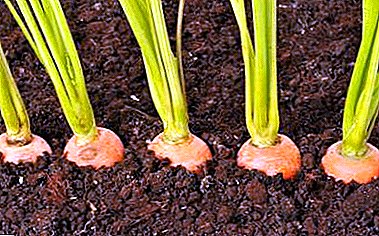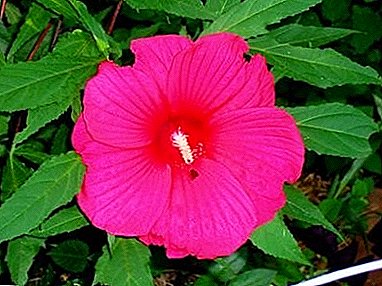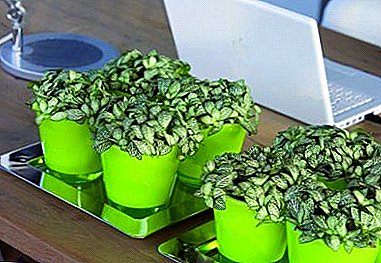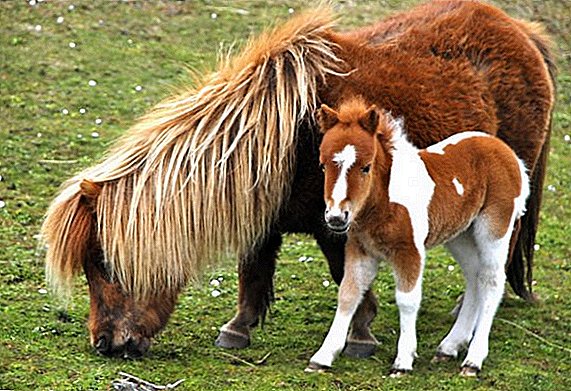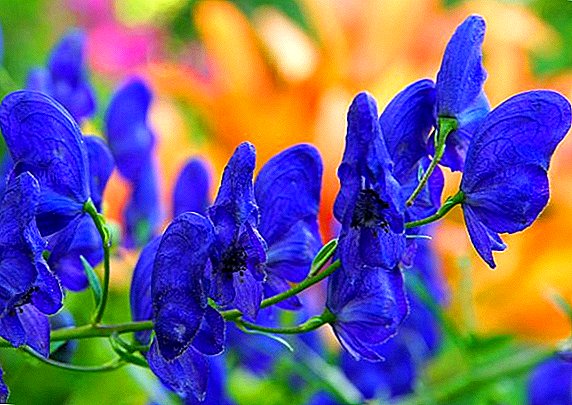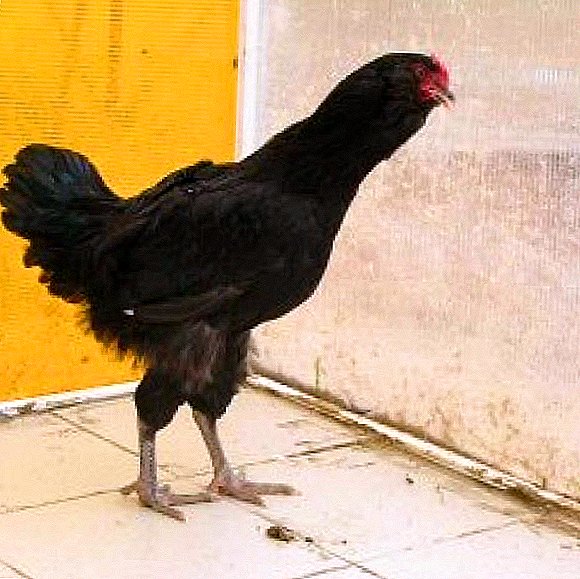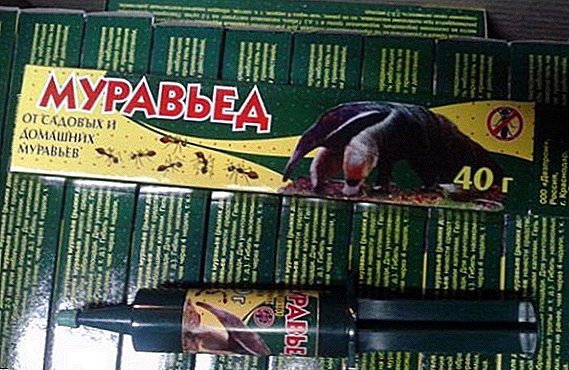 In the wild, many useful and very valuable for human plants. In the old days, folk healers actively used generous natural gifts, but today they are increasingly being squeezed out by traditional medicine. In order to somehow make up for the knowledge lost for a long time, we suggest you to get acquainted with one of the representatives of useful herbs - Lapchatka Norwegian.
In the wild, many useful and very valuable for human plants. In the old days, folk healers actively used generous natural gifts, but today they are increasingly being squeezed out by traditional medicine. In order to somehow make up for the knowledge lost for a long time, we suggest you to get acquainted with one of the representatives of useful herbs - Lapchatka Norwegian.
Botanical description
Specified one-, two-, three or four-year plant belongs to the Rosaceae family, although in fact its flowers are yellow. They are collected in many-flowered inflorescences and a little twisted. After flowering, the pedicels remain erect, and sepals change their sizes: the outer ones will be longer than the inner ones (they are the same during the flowering period). Flower petals are often shorter than sepals. Flowering begins in June and ends in September. 
Important! Potentilla (of any kind) - these are excellent ornamental plants, abundant and bright blooming which will be very useful in any flowerbed or mixborders.Leaf plates can be either ternate or composed of five parts, some of which are not pinnate (2-3 leaves). The leaflets are also divided into species according to their shape: they are oblong (the base is wedge-shaped) or obovate, but all the leaf plates are unevenly serrate and are covered with rigid hairiness on both sides.
On the erect stem of the plant (at the top it is branched) there are quite a lot of leaves, and at the end rigid hairs are visualized.
The fruits of this type of Potentilla are egg-shaped, small and wrinkled. The bar is thickened at the base and of almost the same length as a mature fruit, maybe a little shorter than it. Fruiting begins around mid-summer, approximately in July, but depending on the climatic region, specific dates may vary slightly.
The height of an adult Norwegian Potentilla plant often reaches 50 cm, although specimens with a height of no more than 20-30 cm are often found. 
Did you know? The folk names of Potentilla are “gooseberry”, “mogina”, “pyatiperstnik” and “pyatipoloshnik”, but the scientific name of the genus Potentilla can be decoded as “strong”, which fully corresponds to the healing possibilities of the plant.
Potentilla Spread
Under natural conditions, this plant feels great in the so-called "weed" places (for example, on vacant lots and along busy roads), as well as near various water bodies, on steam fields, wastelands and clearings.
You can find it in Russia, Ukraine, Eastern Siberia, as well as in Europe, with the exception of the southern regions. Sometimes the silverweed is mastered well near the residential houses and in the gardens, although they are trying to remove it from the latter, taking it as ordinary weed grass.
Pyrei, thistle, milk thistle, dodder, purslane, quinoa, amaranth, nettle - weeds that are used in traditional medicine.

Medicinal properties
For medicinal purposes, it is customary to use both the above-ground (stalks, flowers and leaves) and the underground parts of the silverweed, that is, the roots. As part of the latter, you can find useful tannins, and studying the composition of the grass, you will see that carotene is also added to them. Phenol carboxylic acids and many of their derivatives are found in the leaves of the plant: kaempferol, quercetin, caffeic, ellagic and ferulic acids.
Given such useful components, it is easy to explain the healing properties Potentilla brothwhich is successfully used for angina pectoris and scrofula, because the plant has antibacterial properties.
Important! Never self-medicate and before using any plant, be sure to consult your doctor about the possibility of its use specifically in your case.In particular, recipe preparation means to eliminate the manifestations of stenocardia may have the following form: for one tablespoon of crushed roots of the potentilla, take 300 ml of water and, after mixing, place on a small fire for 5-7 minutes. After the allotted time, the therapeutic mixture is removed and left to infuse for 2 hours, and then filtered and consumed 3-4 times a day for 1/3 cup.
When angina apply blood-red geranium, hellebore, bathing suit, coltsfoot, catnip, hawthorn.
 As alternative cooking broth You can pour 10 g of the same raw material with half a liter of hot liquid, then boil everything over low heat for 20 minutes. The finished product is filtered and consumed in one big spoon every two hours.
As alternative cooking broth You can pour 10 g of the same raw material with half a liter of hot liquid, then boil everything over low heat for 20 minutes. The finished product is filtered and consumed in one big spoon every two hours.Used silvergrass and as a bactericidal, wound-healing, anti-inflammatory and astringent, and therefore the following recipes are quite common.
Did you know? Some varieties of Potentilla are easily confused with other known plants. For example, Indian cinquefoil is very reminiscent of strawberries, not only the leaves, but also the fruits, only you will hardly like their taste. The difference lies perhaps in the color of flowers: in the specified plant they are yellow, not white.Herbal decoction: For 10 g of dried and crushed raw materials, take 250 ml of hot water and boil the mixture over medium heat for about five minutes. Then the container with the broth is removed from the stove and insist for two hours. After filtering, the finished medicinal composition can be taken 50 g 3-4 times a day, before meals.
 Broth from seeds: 10 g of seeds of a plant are stirred in a glass of milk and insist in a dark place for 2 hours. The finished strained mixture should be taken twice a day for 100 g.
Broth from seeds: 10 g of seeds of a plant are stirred in a glass of milk and insist in a dark place for 2 hours. The finished strained mixture should be taken twice a day for 100 g.Potentilla grass juice: The selected and well-washed above-ground part of the plant must be filled with water and, after passing through a meat grinder, squeeze the juice out of it. It is likely that it will be thick and viscous, because of which it is further diluted with hot water in a ratio of 1: 2 and boiled. Ready boiled and diluted juice is taken 4 times a day before meals.
Important! Potentilla is not suitable for treating any problems in hypotension, as it can significantly reduce pressure.All the recipes listed, as well as the plant itself, are widely distributed, although it is necessary to note the individual body reactions to the main components. While some people begin to feel better, others can make their condition worse, which is explained by the individual intolerance of certain components.
 That is why it is necessary to strictly adhere to the dosage, and in some cases (for example, in the presence of any allergic reactions in the past) it is better to start with a small amount of this medicine.
That is why it is necessary to strictly adhere to the dosage, and in some cases (for example, in the presence of any allergic reactions in the past) it is better to start with a small amount of this medicine.

